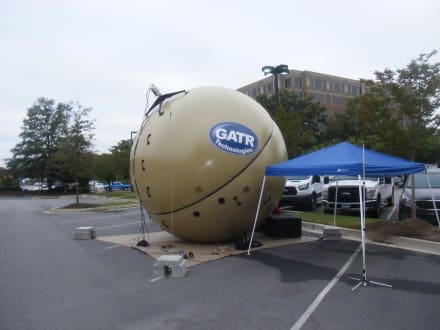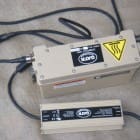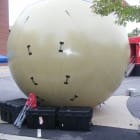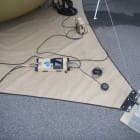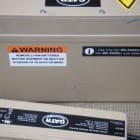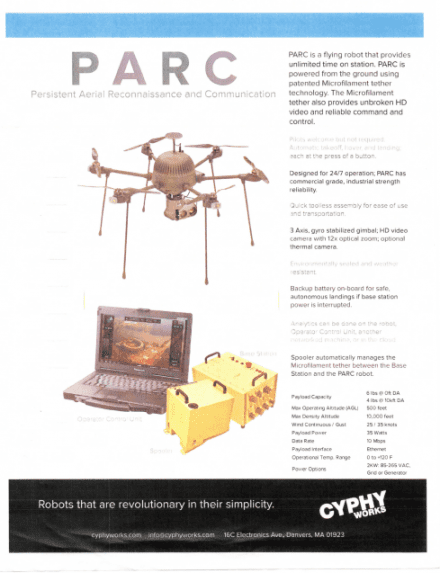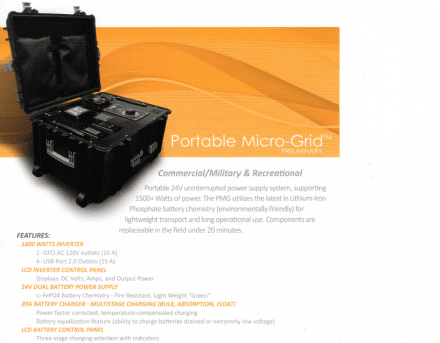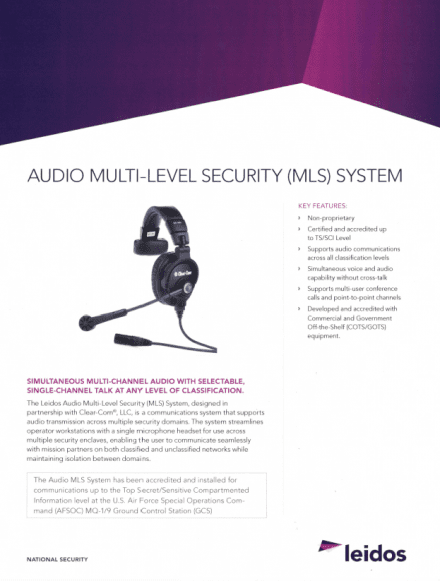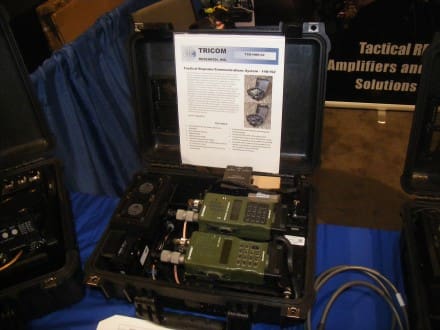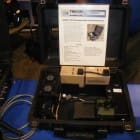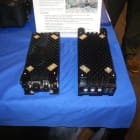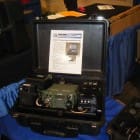-Recently used for 25th ID Cobra Gold rotation after their SATCOM was rendered NMC during sealift. A 4 man team deployed via commercial air with a 4M GATR and provided DIV MAIN CP comms. What used to take a long bed 5-ton can now be put in the bed of a 4-pax or a large sedan.
-No component weighs over 80lbs. The ball was 77lbs. The ball itself can be transported in a canvas bag. Not jumpable unless soldier is 6’4″ + but definitely door-bundle per the retired JM rep. It can operate in windspeeds up 50 kts or so, well beyond the threshold of normal rigid dishes due to the aerodynamics of a ball versus a bowl.
-The two Pelican boxes hold the electronics and blowers. The Hardigg box holds the ball in its bag for palletizing. Not essential.
-The dish reflector shape is held by differential pressurization between the halves of the ball. If the ball is damaged punctured (by fragementation or small arms), the blowers kick up to compensate for air loss. It comes with a patch kit and is made of rip-stop material.
-Note the “Satellite this way” markings on ground mat and sizing of the anchor plates to allow ammo cans, 5 gallon jugs, sandbags, or bricks to be used. All tie-downcabling and turnbuckles are integrated for quick setup and no line snags. The protractor is also integrated for elevation checks of the dish. A clear vinyl window allows a visual check on the reflector shape without guessing. The slightly blurry photo with the oval in the corner is the view inside.
-Blowers use regular radio batteries for the UPS.
Available in smaller sizes, too.
Submitted by Fly On The Wall


